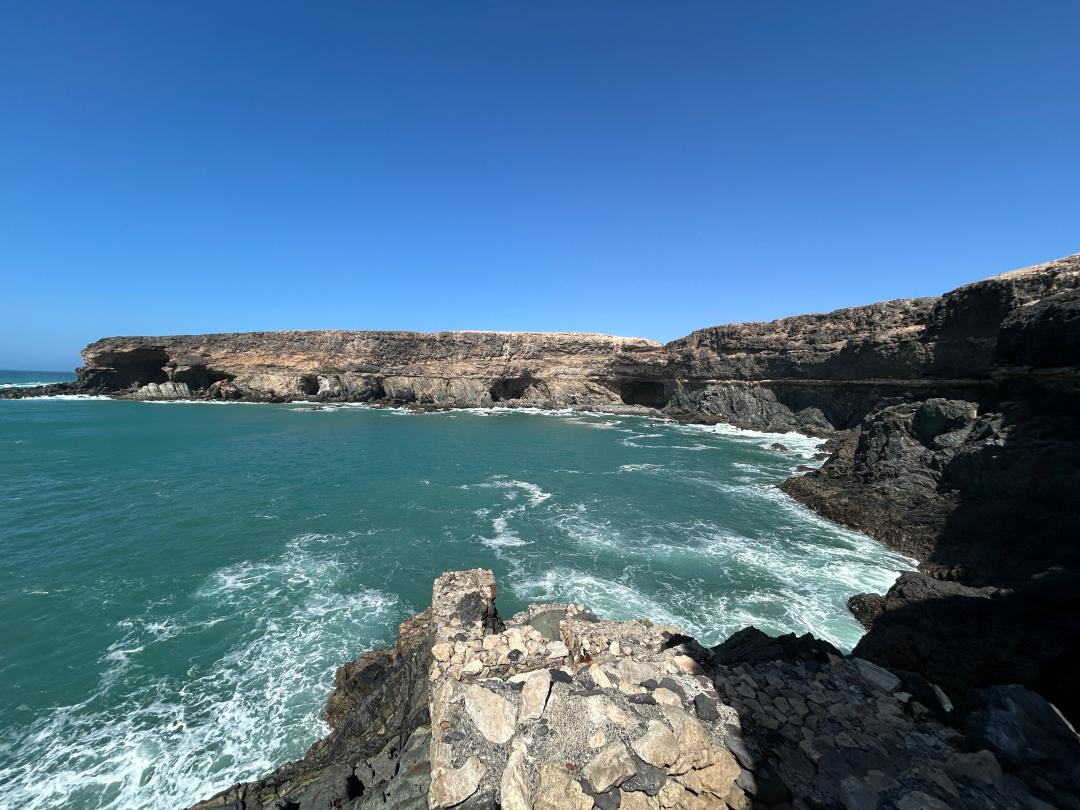Hidden along Fuerteventura’s wild west coast, the Ajuy Caves are a natural wonder with a deep geological and historical significance. Formed over 70 million years ago, these caves hold the oldest exposed rocks in the Canary Islands—remnants of the ocean floor long before the archipelago even existed.
Historically, Ajuy was more than just a scenic spot; it played a key role in Fuerteventura’s limestone trade. The area was once home to lime kilns (hornos de cal), where extracted limestone was burned to produce quicklime, a valuable material used in construction and agriculture. From here, ships transported it to the Americas and other Canary Islands. Today, visitors can still spot the remains of these old limestone stoves along the coastal path.
Following the trail down into the caves, you’ll be met with towering basalt walls, dramatic cliffs, and the relentless crash of the Atlantic.
But you won’t be alone—Ajuy is full of chipmunks. These friendly, curious Barbary ground squirrels, introduced to the island decades ago, dart between the rocks and are always on the lookout for snacks from passing hikers.
Easily accessible from the village of Ajuy, this off-beat spot is a must-see for adventurers, history buffs, and anyone looking to step into Fuerteventura’s prehistoric and industrial past—with some unexpected furry company along the way.




